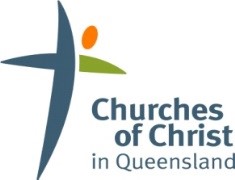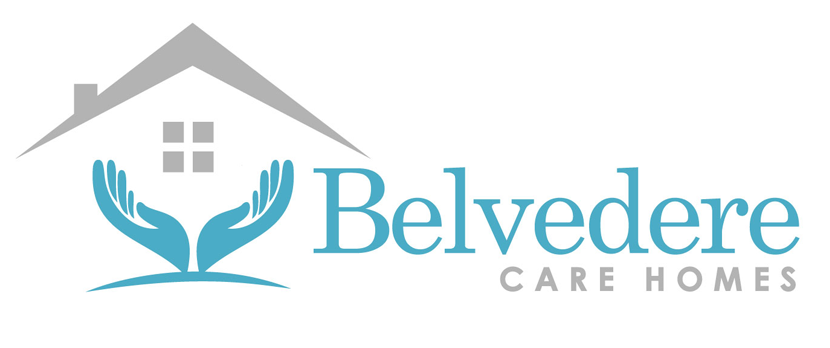Title Page
-
Conducted on
-
Prepared by
-
Location
Standard: The environment should be clean, free from dust, dirt and body fluid stains and spillages
-
This audit tool should be completed weekly by the Manager or Lead person for Infection Prevention and Control
-
In the event of non-compliance, action plans should be produced and reviewed regularly
-
Completed audit tools should be kept locally for good practice assurance and as evidence for Care Inspcetorate inspections
-
Audit completed by
-
Premises audited
Contents
-
Job title
-
Date
Page
1. Overview of the environment
2. Bathrooms/showers
3. Bedrooms
-
4. Cleaner’s room
-
5. Clinical room/clean utility
6. Dining room
7. Kitchen areas
8. Hairdressing room
9. Laundry room
10. Linen store room/cupboard
11. Lounge, sitting areas, halls/corridors
12. Sensory room
-
13. Sluice/dirty utility
14. Toilets, including en-suites
-
References
-
Safe management of the care environment Audit Tool for Care Homes Version 2.00
Page 1 of 11
-
1. (Please circle the answer)
-
The floor is in good doors
-
NA s
-
NA i
-
Comments d
NA e
-
Safe management of the care environment Audit Tool for Care Homes November 2020 Version 2.00
Page 2 of 11 c
-
1. (Please circle the answer)
-
Fixtures and fittings, e.g. condition and clean
-
Furniture, including condition and clean
-
(check under cushions and foot stools)
-
A foot operated lidded inside and out
-
NA s
-
NA i
-
NA d
NA e
-
After completing the above ‘Overview of the environment’, please complete the additional questions below
-
Safe management of the care environment Audit Tool for Care Homes November 2020 Version 2.00
Page 3 of 11
Environment
2. Bathrooms/shower rooms
-
State which bathrooms/shower rooms checked:
-
There is a facility for offensive waste, e.g. continence pads, disposal
-
Access to the handwash basin is clear
-
The handwash basin is free from clutter, e.g. used items
-
Sanitary ware and fittings are in good condition, clean and free from lime scale and stains
-
Shower curtains are clean and free from mould and are included on the cleaning schedule
-
Cleaning products are available (not stored in the bathroom) for staff to use
-
The areas are free from inappropriate storage, e.g. hoists, slings, towels, excess stocks of gloves, bags
3. Bedrooms
-
State which bedrooms checked:
-
Bed frames are in good condition, clean and free from dust and soiling, e.g. body fluid stains
-
The room is free from offensive odour, e.g. urine
-
Hand hygiene facilities are available for residents to clean their hands prior to meals/snacks (skin wipes are an acceptable alternative to hand washing facilities)
-
Safe management of the care environment Audit Tool for Care Homes November 2020 Version 2.00
Page 4 of 11
Environment
-
Access to the handwash basin is clear
-
The handwash basin is free from clutter, e.g. used items
-
4. Cleaner’s room
-
A cleaner’s/domestic’s room is available
-
A laminated ‘Hand hygiene technique for staff’ poster is displayed
-
Access to the handwash basin is clear
-
The handwash basin is free from clutter, e.g. used items
-
A dedicated bucket sink (stand alone or part of a space saving janitorial unit) is available, in good condition and clean
-
A laminated poster identifying the ‘National colour coding for cleaning materials’ is displayed
-
Cleaning equipment is colour coded in accordance with National guidance
-
Cleaning and nursing staff can describe the National colour coding for cleaning materials and equipment:
-
RED for bathrooms, washrooms, showers, toilets, basins and bathroom floors
-
BLUE for general areas including lounges, offices, corridors and bedrooms
-
GREEN for kitchen areas including satellite kitchen areas and food storage areas
-
YELLOW for bedrooms when someone has an infection and is cared for in their own room (isolated)
-
10. A cleaning schedule is available
-
11. Cleaning products comply with ‘Safe management of the care environment Policy’, e.g. pH neutral detergent,
-
Milton
-
12. PPE is available; colour coded, e.g. aprons in red, blue, green and yellow
-
13. Disposable cloths are disposed of daily and when visibly soiled
-
Safe management of the care environment Audit Tool for Care Homes November 2020 Version 2.00
Page 5 of 11
Environment
-
14. Disposable cloths are used in a resident’s room when they are isolated due to a suspected or known infection, e.g. Clostridioides difficile or viral gastroenteritis, and disposed of as infectious waste after each use
-
15. Used mops are thoroughly rinsed in clean warm water after use, excess moisture removed and stored with the head uppermost with the use of wall mounted clips
-
16. Disposable mop heads are disposed of daily and whenever grossly soiled
-
17. Disposable mop heads used in a resident’s room when they are isolated due to a suspected or known infection, e.g. Clostridioides difficile, viral gastroenteritis, are disposed of as infectious waste after each use
-
18. Reusable mop heads are laundered daily and when visibly soiled, at the highest temperature the mop head will withstand
-
19. Reusable mop heads are replaced regularly depending on the frequency of use
-
21. Mop buckets should be cleaned after use, dried with paper towels, then disinfected and dried with paper towels, or stored inverted (upside down) to air dry
-
22. Buckets are clean and free from dirt/grime
-
23. Domestic gloves are washed after use with pH neutral detergent and warm water
-
5. Clinical room/clean utility
-
A clinical room/clean utility room is available
-
A laminated ‘Hand hygiene technique for staff’ poster is displayed
-
Access to the handwash basin is clear
-
The handwash basin is free from clutter, e.g. used items
-
Safe management of the care environment Audit Tool for Care Homes November 2020 Version 2.00
Page 6 of 11
Environment
-
There is appropriate storage of sterile/clean items, e.g. off the floor in a dust free environment (cupboard/ wipeable lidded container)
6. Dining room
-
Table cloths and table mats are clean
-
Cutlery is clean with no dried on food
-
Condiment containers, e.g. salt and pepper pots, vinegar bottles, sauce bottles, are in good condition and clean
-
Cupboards and cutlery drawers/container are clean and free from dust and debris
-
Hand hygiene facilities are available for residents to clean their hands prior to meals/snacks (skin wipes are an acceptable alternative to hand washing facilities)
7. Kitchen areas
-
All appliances, work surfaces, sink, taps, are in a good condition, clean and free from food and beverage stains
-
Cupboards and cutlery drawers/container are clean and free from dust and debris
8. Hairdressing room
-
Hair wash basin is in good condition and clean
-
Access to the handwash basin in clear
-
The handwash basin is free from clutter, e.g. used items
-
The chair is clean and in good condition
-
Clean towels are stored separate from used towels
-
Safe management of the care environment Audit Tool for Care Homes November 2020 Version 2.00
Page 7 of 11
Environment
9. Laundry room
-
The hair dressing trolley is clean and free from dust and hair
-
There is a dedicated laundry room, e.g. the room is not used for any other function
-
Machines (including dispensers) are in good condition and clean, e.g. free from dirt, dust, mould and spilt or congealed washing power/liquid
-
A laminated ‘Hand hygiene technique for staff’ poster is displayed
-
Access to the handwash basin is clear
-
The handwash basin is free from clutter, e.g. used items
-
Only commercial washing machines and tumble driers are in use
-
There is documented evidence linen is washed at 65oC for not less than 10 minutes or 71oC for not less than 3 minutes
-
Laundry staff wear appropriate PPE, e.g. gloves and apron, when handling all used, soiled, fouled and infected linen
-
Laundry waiting to be laundered is correctly segregated in the appropriate colour bags
-
Used, soiled and fouled linen in a white bag
-
Infected linen in a soluble bag placed inside a red bag
-
12. Used and clean linen are kept separate in the laundry room during the washing and drying process
-
13. Clean linen, e.g. residents clothing, is not stored in the laundry room
10. Linen store room/cupboard
-
A linen store room/cupboard is available (this should be separate from the laundry room, clean linen should not be stored in a laundry room)
-
The room/cupboard is free from inappropriate items, e.g. fans, Christmas decorations, equipment
-
Safe management of the care environment Audit Tool for Care Homes November 2020 Version 2.00
Page 8 of 11
Environment
-
Linen is stored on shelving and above floor level
-
Shelving is impervious and in a good state of repair
11. Lounge, sitting areas, halls/corridors
-
Corridors/hallways are free from clutter and inappropriate items, e.g. waste bins
12. Sensory room
-
Soft furnishings are clean, e.g. cushions, fidget handheld fabric items, and washed on at least a weekly basis and when visibly soiled
-
Hard surface objects are clean and cleaned (and disinfected when necessary) on at least a weekly basis and when visibly soiled
-
Items of sensory light therapy, e.g. bubble tubes, are cleaned and disinfected as per manufacturer’s instructions
-
Sensory equipment should be stored in smooth wipeable lidded containers
-
Staff ensure resident’s hands are cleaned before using the sensory room
-
13. Sluice/dirty utility
-
A dirty utility/sluice is available
-
The room is free from inappropriate items and clutter, e.g. unused equipment, medical equipment that has been cleaned/decontaminated, general equipment storage
-
The room is free from clean or sterile items, e.g. resident wash bowls, combs, razors
-
A laminated ‘Hand hygiene technique for staff’ poster is displayed
-
Access to the handwash basin is clear
-
Safe management of the care environment Audit Tool for Care Homes November 2020 Version 2.00
Page 9 of 11
Environment
-
The handwash basin is free from clutter, e.g. used items
-
A dedicated sink is available for decontamination of equipment
-
A bed pan washer/disinfector or macerator is available and is in good condition and working order. If not available, a Commode pan cleaning poster is displayed
-
10. A slop hopper, if available, is clean and in working order
-
11. A commode cleaning poster is displayed
-
12. Sanitary ware and fittings are in good condition, clean and free from lime scale and stains
-
13. Commode pans and urinals are in good condition, e.g. no evidence of cracking, scoring or staining
-
14. pH neutral detergent, disinfectant wipes and disinfectants, e.g. Milton, are available
-
15. The Bristol Stool Form Scale Chart (laminated/colour) is displayed
14. Toilets, including en-suites
-
State which toilets/en-suites checked:
-
There is a facility for offensive waste, e.g. continence pads, disposal
-
A ‘Stop the spread of germs – please wash your hands’ poster is displayed
-
Access to the handwash basin is clear
-
The handwash basin is free from clutter, e.g. used items
-
Sanitary ware and fittings are in good condition, clean and free from lime scale and stains
-
All surfaces of toilets are clean, e.g. seats, lids, hinges, handles and rails
-
Safe management of the care environment Audit Tool for Care Homes November 2020 Version 2.00
Page 10 of 11
Environment
-
All surfaces of raised toilet seats, e.g. risers, support frame, are clean
-
All surfaces of commodes are clean, including underneath the cover, seat and frame
-
10. The commodes have no damage/tears/rust that impedes effective cleaning
-
11. Staff can demonstrate how to clean a commode working from the top down
-
12. Staff can demonstrate how to clean a commode pan
-
Toiletries and other items, e.g. soap bars, shampoo, shower gel, facecloths, razors, etc, are personal use and not shared between residents
-
15. Supplies of toilet roll, pads, waste bags, etc, are minimal and items are not stored on open surfaces
-
References
-
Care Quality Commission (2009) Practice Alert September 2009: Mattresses
Department of Health (July 2015) The Health and Social Care Act 2008 Code of Practice on the prevention and control of infections and related guidance
-
Department of Health (2007) Essential Steps to Safe Clean Care. Inter–healthcare service user infection risk assessment form
Infection Control Nurses Association (2004) Audit Tools for Monitoring Infection Control Standards
-
Loveday HP et al (January 2014) epic3: National Evidence-Based Guidelines for Preventing Healthcare-Associated Infections in NHS Hospitals in England Journal of
-
Hospital Infection Volume 86 Supplement 1, Pages S1-S70
-
National Institute for Health and Care Excellence (2012) Healthcare-associated infections: prevention and control in primary and community care Clinical Guidelines 139
-
National Patient Safety Agency (2008) Clean Hands Save Lives, Service user Safety Alert Second Edition 2nd September 2008
-
National Patient Safety Agency (2007) National Colour Coding Scheme for cleaning materials and equipment
-
NHS England and NHS Improvement (2019) Standard infection control precautions: national hand hygiene and personal protective equipment policy
-
Community Infection Prevention and Control, Harrogate and District NHS Foundation Trust www.infectionpreventioncontrol.co.uk November 2020 Version 2.00
-
© Harrogate and District NHS Foundation Trust
-
Safe management of the care environment Audit Tool for Care Homes November 2020 Version 2.00










